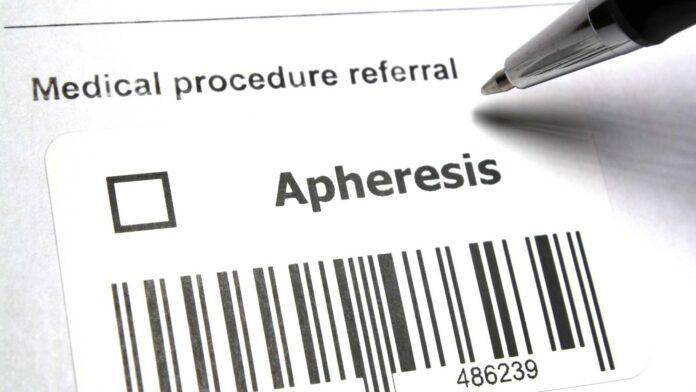Long COVID, also known as post-acute sequelae of SARS-CoV-2 infection (PASC), has emerged as one of the most pressing health challenges following the global pandemic. For many individuals, recovery from the acute phase of COVID-19 is just the beginning, as lingering symptoms persist for months, impacting quality of life and daily functioning. Among emerging therapies, H.E.L.P. Apheresis (Heparin-Induced Extracorporeal Lipoprotein Precipitation) has shown promise in alleviating the symptoms of Long COVID.
This article explores the intricacies of Help Apheresis for Long COVID, its mechanisms, potential benefits, and why it is gaining attention as a revolutionary treatment.
What is H.E.L.P. Apheresis?
H.E.L.P. Apheresis is a specialized blood purification technique designed to filter and remove specific substances from the bloodstream. It was originally developed for managing cardiovascular conditions like hyperlipidemia and atherosclerosis by reducing levels of low-density lipoprotein (LDL) cholesterol and fibrinogen. However, its application has expanded to address other inflammatory and thrombotic disorders, including Long COVID.
The procedure utilizes heparin, an anticoagulant, to bind and precipitate harmful substances in the blood. Through a series of filtration and centrifugation processes, H.E.L.P. Apheresis selectively removes:
- Excess lipoproteins
- Fibrinogen
- Circulating immune complexes
- Pro-inflammatory cytokines
These substances are often elevated in individuals suffering from Long COVID, making this therapy an appealing option.
The Role of Inflammation and Microclots in Long COVID
Long COVID symptoms—ranging from debilitating fatigue and brain fog to cardiovascular and respiratory issues—are believed to result from chronic inflammation, endothelial dysfunction, and microvascular thrombosis. Studies have identified the presence of microclots in the blood of Long COVID patients. These clots obstruct oxygen and nutrient delivery at the cellular level, contributing to the persistent symptoms.
H.E.L.P. Apheresis directly addresses these issues by targeting and reducing:
- Microclots: The filtration process breaks down microclots, improving blood flow.
- Pro-inflammatory mediators: It removes cytokines and other inflammatory markers driving systemic inflammation.
- Viscosity and Coagulation Abnormalities: By reducing fibrinogen and other coagulation factors, H.E.L.P. Apheresis restores normal blood rheology.
How H.E.L.P. Apheresis Works
The procedure typically takes place in a clinical setting and follows these steps:
- Blood Withdrawal: A catheter is inserted into the patient’s vein, and blood is drawn into the apheresis machine.
- Heparin Addition: Heparin is added to the blood to induce the precipitation of specific proteins and lipoproteins.
- Filtration Process: The heparin-bound substances are filtered out, separating unwanted particles from the plasma.
- Blood Return: The cleansed plasma, along with red blood cells, is returned to the patient’s body.
Each session lasts about 2–4 hours, and patients may require multiple treatments depending on the severity of their symptoms.
Benefits of H.E.L.P. Apheresis for Long COVID
1. Reduction in Inflammatory Markers
H.E.L.P. Apheresis has been shown to significantly lower pro-inflammatory cytokines like IL-6 and TNF-alpha, which are often elevated in Long COVID patients. By dampening the inflammatory response, the therapy helps alleviate fatigue, pain, and other systemic symptoms.
2. Improved Blood Flow
The removal of microclots and fibrinogen restores proper blood circulation, ensuring that oxygen and nutrients reach tissues more efficiently. Improved perfusion can have a direct impact on cognitive function, energy levels, and cardiovascular health.
3. Relief from Cardiovascular Symptoms
Patients experiencing post-COVID tachycardia, palpitations, or chest discomfort may benefit from the therapy’s ability to reduce blood viscosity and improve endothelial function.
4. Detoxification of Harmful Immune Complexes
By clearing circulating immune complexes, H.E.L.P. Apheresis can potentially reduce autoimmune-like reactions that contribute to persistent symptoms in Long COVID sufferers.
Clinical Evidence Supporting H.E.L.P. Apheresis
Emerging studies and case reports suggest that H.E.L.P. Apheresis may offer meaningful relief for Long COVID patients. Research has shown that:
- Many patients report a significant reduction in fatigue and brain fog after several sessions of apheresis.
- Markers of endothelial dysfunction, such as von Willebrand factor, decrease following treatment.
- Some individuals achieve long-term symptom resolution, particularly when therapy is initiated early in the disease course.
Further large-scale clinical trials are needed to establish standardized protocols and identify ideal patient populations for this treatment.
Is H.E.L.P. Apheresis Right for You?
H.E.L.P. Apheresis is not a first-line treatment for Long COVID but is considered when conventional therapies fail to provide relief. It is especially recommended for patients with:
- Persistent symptoms linked to microvascular dysfunction
- Laboratory evidence of hypercoagulability or elevated inflammatory markers
- Severe fatigue or cognitive impairment resistant to standard interventions
Before undergoing the procedure, patients should consult a physician experienced in Long COVID management and undergo appropriate diagnostic testing.
Potential Risks and Considerations
While H.E.L.P. Apheresis is generally well-tolerated, it is not without risks. Potential side effects include:
- Bleeding or bruising at the catheter insertion site
- Hypotension during or after the procedure
- Allergic reactions to heparin (rare)
Patients with pre-existing bleeding disorders or heparin allergies should avoid this therapy. Additionally, the cost and availability of H.E.L.P. Apheresis may limit access for some individuals.
Future Perspectives on H.E.L.P. Apheresis in Long COVID Treatment
As the global medical community continues to grapple with the long-term consequences of COVID-19, innovative therapies like H.E.L.P. Apheresis offer hope to millions of affected individuals. Ongoing research will determine its place in the broader treatment landscape, but its ability to target key pathophysiological processes makes it a promising option.
As more healthcare providers become aware of its benefits, access to this therapy is expected to improve, potentially transforming the lives of Long COVID patients worldwide.
Conclusion
The emergence of Long COVID has underscored the need for effective, evidence-based therapies to address its multifaceted symptoms. H.E.L.P. Apheresis stands out as a cutting-edge treatment capable of tackling inflammation, microclots, and other drivers of chronic disease. While not universally available or suitable for all patients, it represents a beacon of hope for those seeking relief from persistent post-COVID symptoms.
By prioritizing research and expanding access to innovative treatments like H.E.L.P. Apheresis, the medical community can take meaningful strides toward alleviating the burden of Long COVID and restoring patients’ quality of life.
